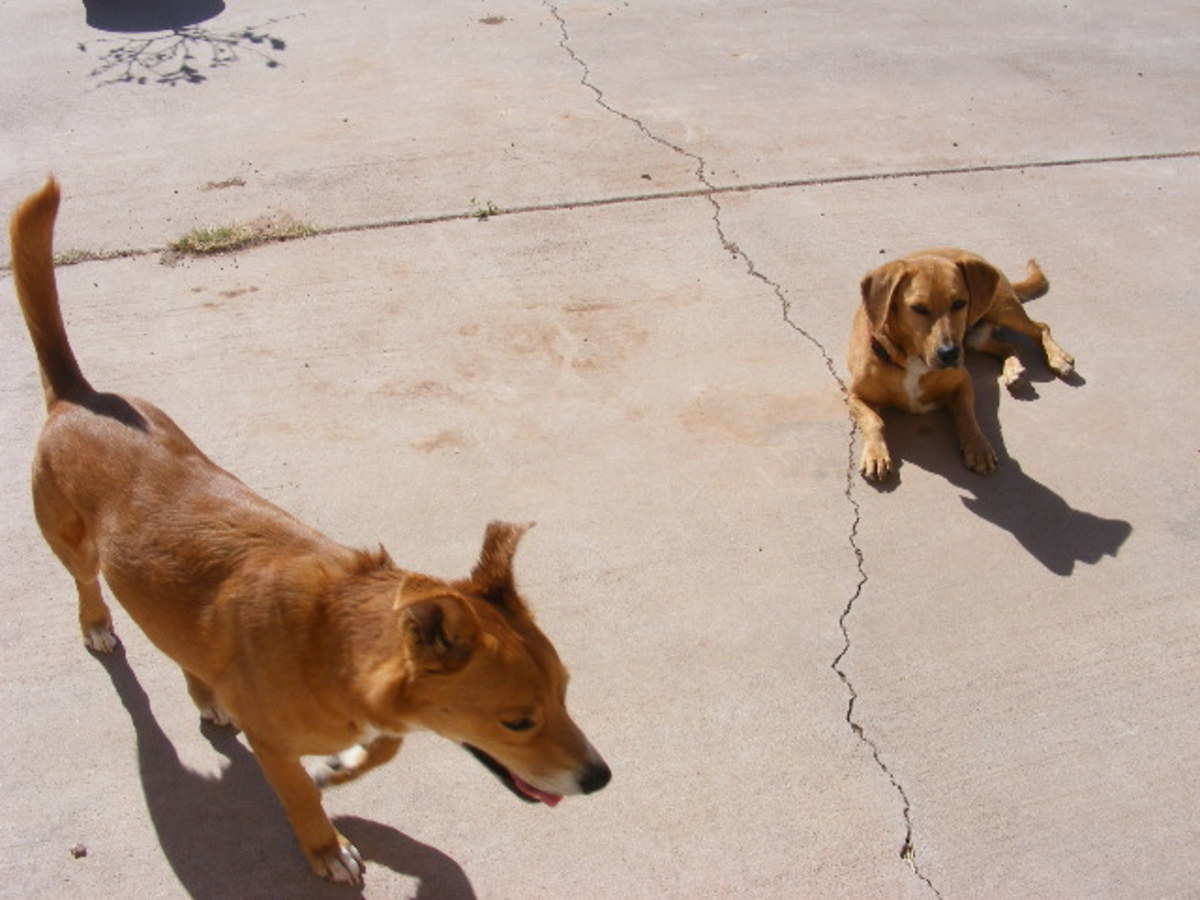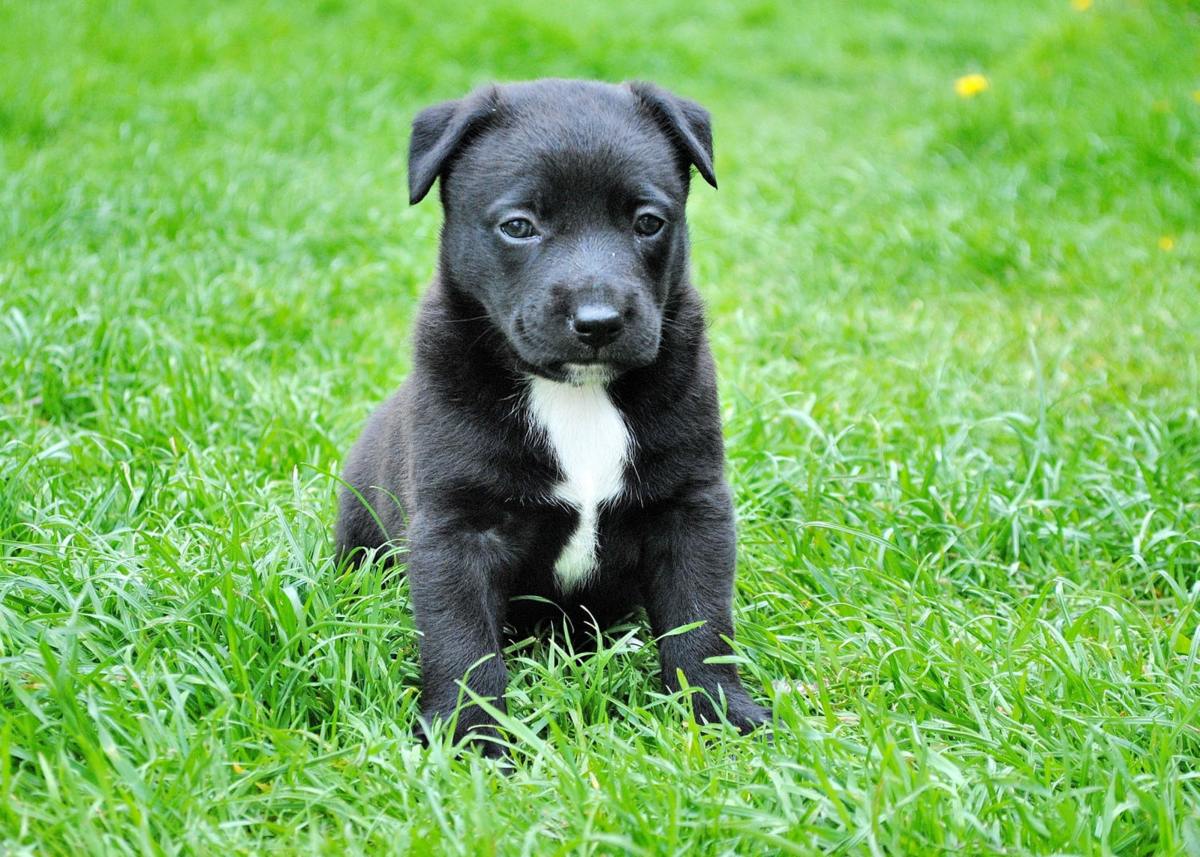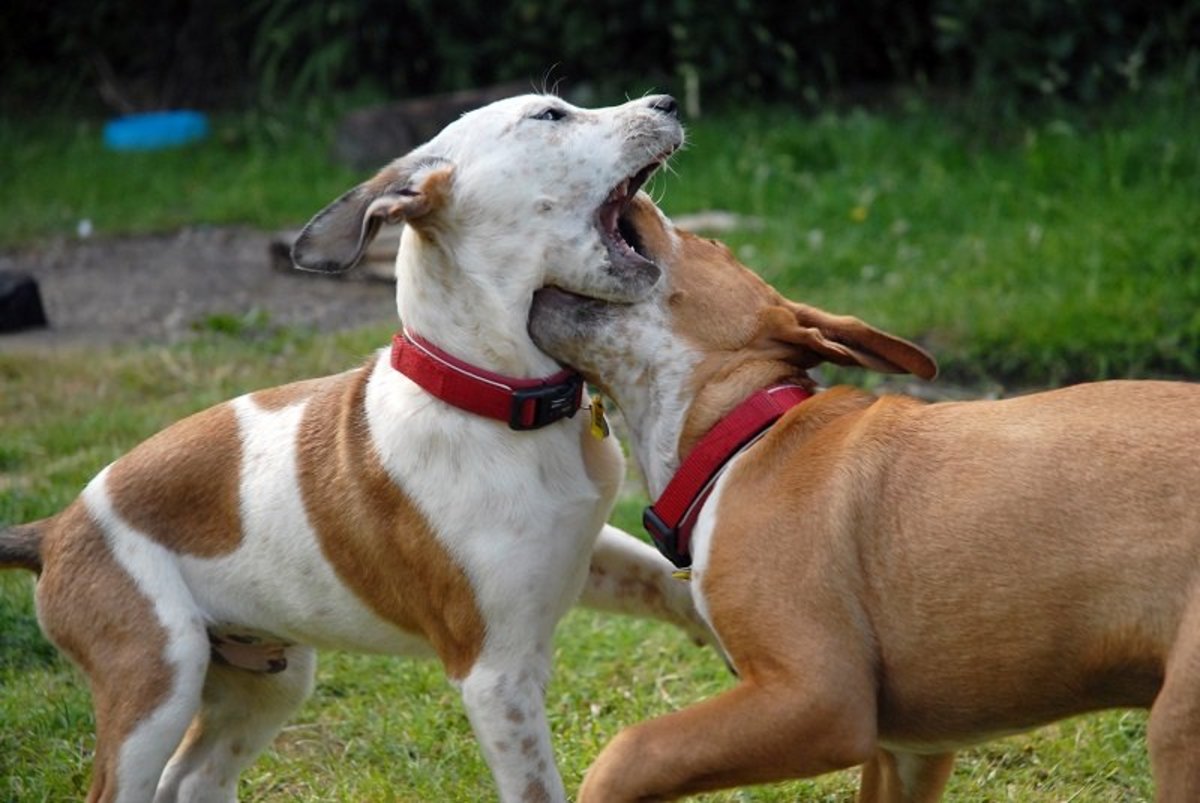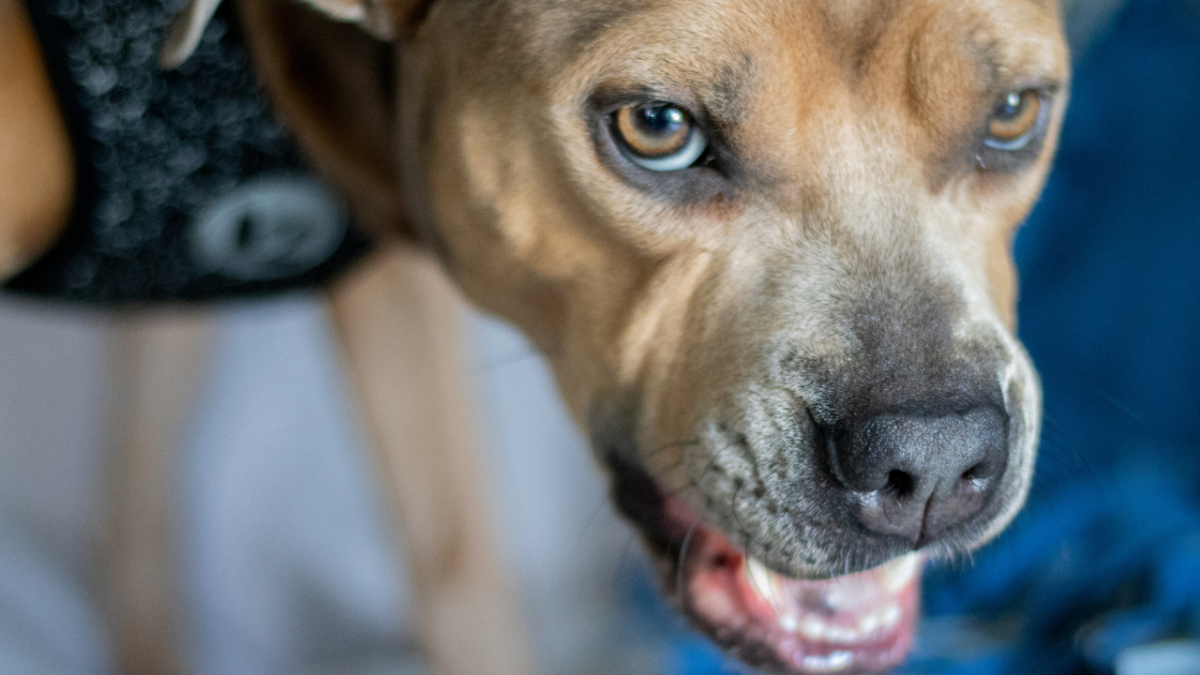Calming Down Your Crazy Dog
Doggy Bootcamp
When coming from a completely out of control situation, it's important to follow this guide (or a similar one) strictly at first. Once this routine becomes second nature to you're whole family, dog included, you can begin to give back some of the privileges he enjoys. Give them back one at a time. Doing so allows you to assess which of these privileges cause your dog's behavior to worsen again. Those are his weaknesses.
For example, my Doberman is a perfect gentleman, until I give him the "okay" to lie on the sofa with me for 10 minutes. Eventually I shoo him off, but once I have allowed this seemingly small indulgence, he will jump onto whatever furniture he feels like without permission for the next three days. He will attempt to pull on his leash on walks. He gets pushy going through doorways, steals food off the table and out of the trash, and becomes a nuisance in general. Access to furniture is one of his weaknesses. It causes his behavior to degrade in several areas. It's what I call a "privilege threshold," and it requires we go through our leadership routine from the beginning.
Your Dog Works
The most important rule of leadership is that your dog should get nothing for free. He should not have the opportunity to provide for himself, as a subordinate in the pack. Providing and controlling resources is the responsibility of a leader, not his. As the leader, you must maintain your position and be a reliable member of the family.
As with many behavior issues in dog training, prevention is key. You want to set your dog up to succeed! You want him to win! You want to see him flourish and be a productive member of your family! That means he must earn what he gets. He must earn everything.
Most of preventing your dog from providing for himself is common sense. For example, do not leave food available to him. Feed him at scheduled meal times and only after he has performed as required. Performing can be as simple as waiting patiently while you prepare his bowl. If he darts for the bowl prematurely, take it away. Try again after waiting briefly. Teach him that privileges and rewards get removed for the wrong behavior.
List of Privileges & Rewards
Most owners are unaware of the rewards their dog gets on a daily basis, and that makes controlling them impossible. The more you know, the more opportunities you can give your dog to earn these rewards by using good behavior. Remember, it's your job to set your dog up to win! Make it easy on him by recognizing what areas you both need to work on. Your dog should be given the chance to earn the following:
- Access to furniture.
- Toys.
- Treats.
- Meals. Your dog should eat after you and your family.
- Verbal attention.
- Physical attention. Don't pet your dog when he asks for it. Call him over for attention on your schedule.
- Access to certain rooms.
- Going through doorways. Leaders go first.
- Putting on a leash.
- Walking or running.
- Movement toward an object of interest.
- Anything your dog WANTS.
None of these are more important than the last on the list. If you can tell your dog wants something, use it! Is he pulling at his leash because he wants to move forward? Stop moving until he stops pulling. Is he trying to snatch food out of your hand? Keep removing it until he sits patiently, then reward him with an extra special treat of his own.

Consequences
There are consequences to bad behavior, but it's important to note that they are not punishments. Dogs learn to avoid punishments by engaging in bad behavior when you are not around, or when the reward is worth the risk. Using this kind of motivation cultivates a mischievous canine, one that angers and frustrates his owner, and that can lead to more punishment. Continuing this cycle can eventually end with the family dog confined in the backyard 24/7 at best, and animal abuse or neglect in at worst.
The absolute best way to motivate a dog is to only allow his reward for the right actions. So the consequence for the wrong action should be the removal of the reward. Imagine a Labrador who loves to jump and greet his owner when she arrives home from work. This is an extremely common behavioral problem. She usually attempts to remedy this by holding out her arms or pushing her dog away when he starts jumping. She repeatedly yells "No!" in a stern voice, but it does nothing. He keeps jumping and whining until she lets her dog outside. In this scenario, the affectionate Lab has received three rewards from his misbehavior: physical contact, verbal attention, and access to the outdoors.
To stop this Labrador from excessive jumping, his owner must withhold the rewards until he demonstrates the correct behavior. In this case, she can simply wait it out. When the dog begins to jump, his owner folds her arms and turns her back to him. She keeps facing away from him until he stops. When he does so, she can turn around and start heading to the backdoor to let him out. Each time he begins to jump, she stops and turns her back to him. She does not reward him with contact. She stops moving towards giving him access to the yard. If her Lab wants these things, he must stop and figure out how to get them.
Removal of a potential reward is the consequence for improper behavior. When your dog doesn't get things right, don't yell or rely on punishment. Simply remove the reward, or stop rewarding until you can elicit the correct behavior.








